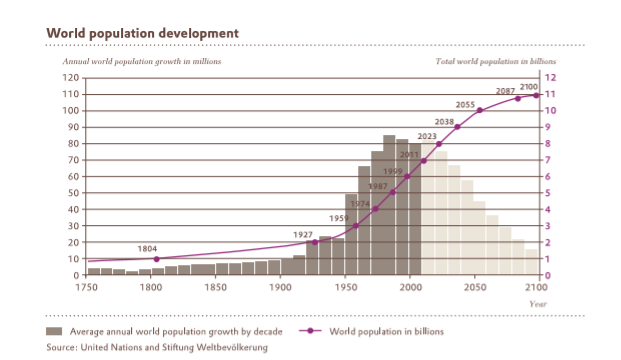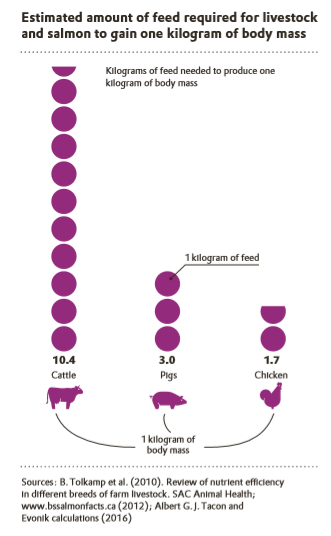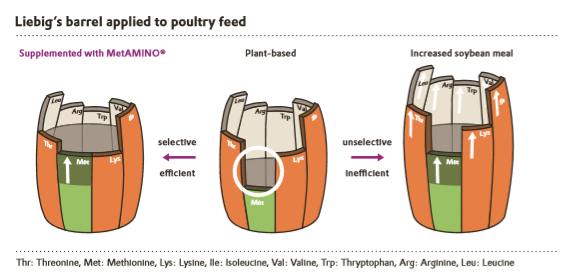



More sustainable meat production with low-protein, amino acid enriched feeds
Evonik’s animal feed solutions make animal husbandry more efficient and help save resourcesThe clock is ticking: By the latest UN prediction, the world’s population will grow from 7.7 billion in 2019 to 9.7 billion by 2050, mainly driven by high fertility rates in sub-Saharan Africa and some Asian countries. That would mean the world will have to feed an additional two billion mouths in barely more than a generation from now.

There’s no indication yet that this trend will reverse anytime soon: while the rate of population growth has started to slow down, our globe will be home to 10.9 billion people in 2100 by the same UN projection. Even taking the high degree of uncertainty into account, major population growth seems likely over the course of this century.
Increasing global meat demand
For the health of us and the billions yet to be born, high-quality proteins – as provided by meat, poultry and fish, eggs and milk as well as some plants – are fundamental from a nutritional point of view. Providing enough affordable protein without overly harming the planet, though, is a tough challenge. Reducing meat consumption in favour of a more balanced diet rich in fruits, vegetables, nuts and legumes could be part of the solution: Such a primarily plant-based diet would benefit both our health and the environment, but a global shift away from animal-based proteins is not in sight.
Instead, meat production is increasing: According to the OECD-FAO Agricultural Outlook 2020-2029, global meat production is projected to expand by 12 percent over this decade mainly driven by emerging and low-income countries such as Brazil, China, India, Mexico, Pakistan, and Turkey. The appetite for meat is growing due to a combination of population growth, rising per-capita income and progressive urbanization. Global annual livestock production could reach 455 million metric tons by 2050, compared to 258 million tons in 2005/2007 and 336 million tons in 2018.
Resource-intensive livestock farming
However, producing more meat comes at a cost not only to consumers, but to society and environment at large. The wastefulness becomes obvious by looking at how much feed it takes to produce a kilogram of meat. Chickens – the most-eaten animal species by weight before the pig as of 2020 – needs 1.7 kilograms of feed to gain one kilogram of body mass. Swine requires 3.0 kilograms of feed, cattle even 10.7 kilograms.

Compared to pork and beef, poultry in general generates higher yields over shorter production cycles with less resource input. That, and the lack of religious bans on poultry consumption, have contributed to its popularity across continents and cultures. Over this decade, poultry is projected to be the fastest growing meat, accounting for about half of the projected increase in total meat output.
Rainforest clearance for soybean cultivation
One of the main feeds for poultry rearing (as well as for swine and cattle) is the high-protein soybean. On average, it takes about one kilogram of soy plus other feeds to produce one kilogram of poultry. According to preliminary numbers by the United States Department of Agriculture (USDA), 337 million metric tons of soy have been produced worldwide in the 2019/20 crop season. The largest producer by far is Brazil, with 126 million metric tons produced on 37 million hectares – and this vast area is growing, partly through clearing of tropical rainforests.
Many people associate soy with products such as tofu and tempeh, often consumed by vegetarians and vegans as meat substitutes; but the bulk of worldwide soy production – around 70 to 75 percent by weight – is used as animal feed, while around 18 percent is processed for oil mainly used as biodiesel. Together with cattle grazing, planting of soy for feed production is a main driver of the large-scale destruction of tropical rainforests. The conversion of forests into arable farmland harms the environment and the diversity of species. The energy-intensive transport of soybeans from the cultivation areas across land and sea to livestock producers around the world places an additional burden on the environment.
Reducing raw protein and adding amino acids
Just like humans, animals need a balanced diet containing carbohydrates, lipids, and proteins. The proteins consist of some 20 amino acids, half of which cannot be synthesized within the body. Unlike animal-based foods, plants such as wheat, corn, soybeans and peas – all staple feeds in animal husbandry – are low in one or more essential amino acid and thus not considered “complete”. A proven solution to make meat production more efficient and prevent any avoidable damage to the environment is to rely on local crops with less raw protein, and to boost their nutritional value by adding amino acids to the feed.
Only with an adequate proportion of the ten so-called essential amino acids, animals can optimally utilize the feed. The “barrel” image conceived by German chemist Justus von Liebig (1803–1873) illustrates this well. In Liebig’s barrel, staves of different length represent the amino acids; the shorter the stave, the more deficient the amino acid in feed. The shortest stave limits the barrel’s filling capacity, which represents the nutritional potential of the feed.

In plant-based poultry feed, the most deficient amino acid usually is methionine. To prevent protein deficiencies and ensure healthy growth, meat producers can just feed “more of the same” by adding plant-based protein sources such as soybean. This approach improves the barrel’s capacity by lengthening all the staves – an unselective and inefficient approach, since the additional soy also contains the already abundant amino acids. Moreover, feeding too much protein is damaging for both the animal and the environment.
A proven much more sustainable and efficient approach is the targeted supplementation of amino acids. If the amino acid methionine is added, for example through Evonik’s MetAMINO® (DL-Methionine). The shortest stave is lengthened to match the length of lysine, the second limiting amino acid. This significantly improves the capacity of the barrel – or feed conversion rate and nutritional capacity of the animal – without the detrimental effects of feeding more soybeans. The approach helps reduce the quantity of plant-based feed ingredients, enhances feed conversion efficiency, results in a healthier and more balanced diet, and prevents excessive nitrogen excretion which has a negative environmental impact. Supplementing specific nutrients has been standard in animal husbandry for a long time – in fact, the rise of the chicken to become the most-consumed animal by weight over the past decades is closely linked to the discovery and subsequent supplementation of Vitamin D starting in the 1920s, which has allowed housing chickens indoors all year round.
In chicken production, one kilogram of MetAMINO® mixed with two kilograms of Biolys® (L-Lysine) can provide the same nutritive value as 54 kilograms of fishmeal and 34 kilograms of soybean. That means adding these amino acids helps achieve higher yields with far less feed, thereby bringing down the feed bill, and benefitting the environment in multiple ways.
In 2015, the global production capacity of Evonik’s MetAMINO® – the essential amino acid methionine – was at 580,000 metric tons. An area of cropland roughly the size of Malawi would have been required to harvest enough grain-based feed to replace this quantity. Effectively, 11.6 million hectares of cropland were freed up through supplementation with MetAMINO®.
Overall, the use of soybean meal for poultry could be reduced by at least 15 percent through targeted supplementation of amino acids, and pork producers could almost completely forgo soybean meal. This would result in the production of 17 million metric tons less soybean meal per year, equal to six million hectares - or 1.5 times the area of Switzerland - of arable land used for soybean cultivation. For the next 20 years, the level of soy production could remain stable despite the increasing demand for meat of a growing global population.
Conclusion
By reducing the protein content of animal feed and adding specific amino acids, meat producers ensure a balanced and healthy animal diet, save costs, and protect the environment in numerous ways. Targeted supplementation of amino acids is a sustainable way to provide a growing world population with animal-derived proteins while preventing deforestation, retaining biodiversity and reducing monocultures, the use of fertilizers, and water consumption. With amino acid supplementation, not a single additional square meter of rainforest would have to go over the next decades even with increasing meat consumption.









